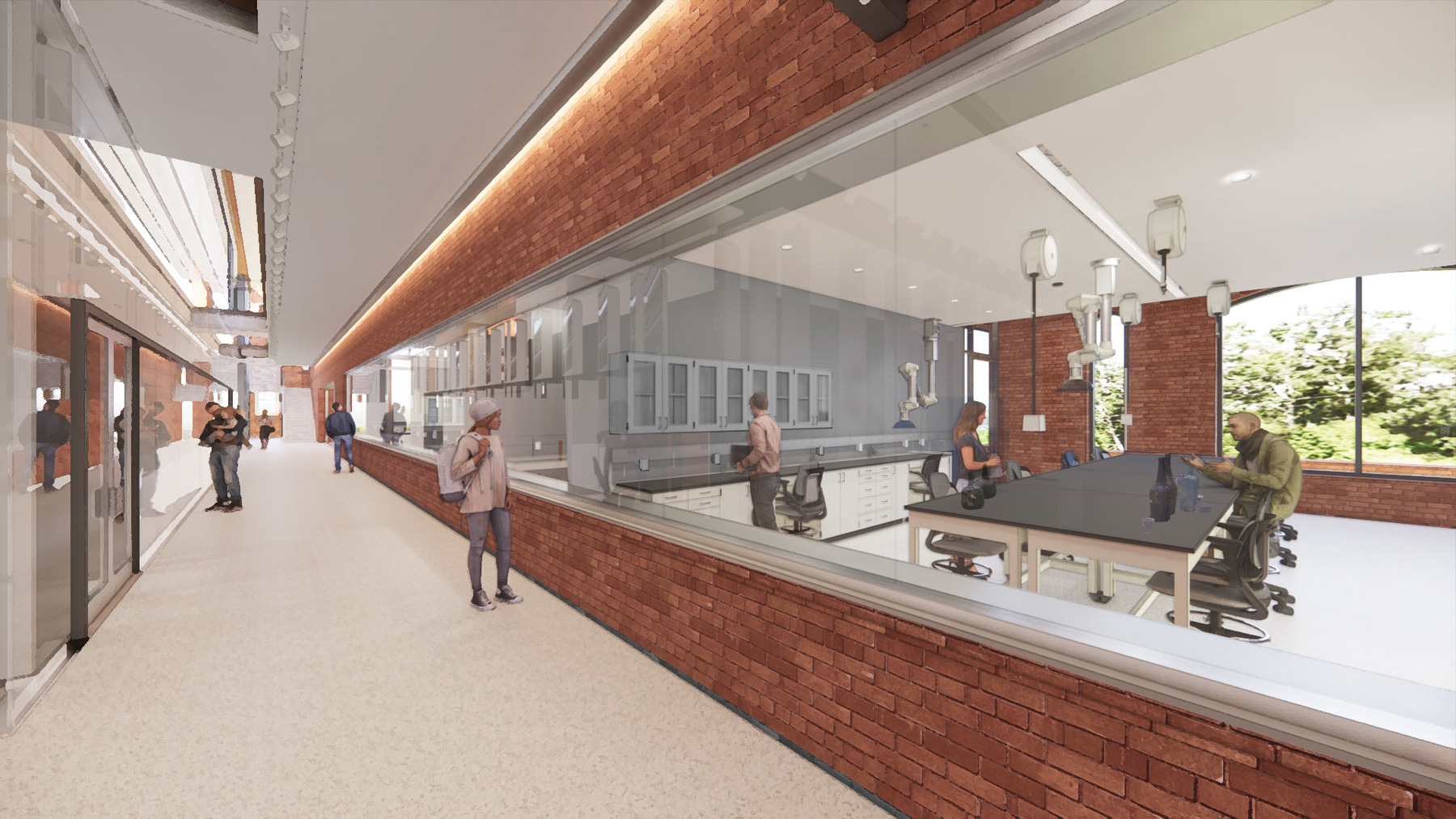Located in the historic city of Williamsburg, Virginia, the Colin G. and Nancy N. Campbell Archaeology Center will feature a state-of-the-art museum alongside an active archaeological laboratory. This two-story, innovative facility will increase public access and allow visitors to experience the process of transforming discovered artifacts into displayed exhibits. A collaboration between Clark Nexsen and The Colonial Williamsburg Foundation, the archaeology center will expand the foundation’s education program and support its continuous research.
Situated on one of the most active archaeological research sections of Colonial Williamsburg’s historic campus, the design of the building is based on the brick garden walls recognizable throughout the most prominent structures in the historic area, and the 18th-century architecture of the front entrance will complement the Art Museums across the street. A blend of old and new, the brick exterior walls will be paired with a zinc wall system and glass curtain wall openings.
At 40,000 square feet, the Campbell Center will give archaeologists the space and resources they need to support Colonial Williamsburg as the largest living history museum in the world. The use of brick will be carried into the interior and coupled with glass panels, providing views into the building’s state-of-the-art labs and enabling visitors to engage with archaeologists as they clean, catalog, and study artifacts. The labs will be equipped with phenolic resin countertops, high-performance drywall, and resinous floors. Wood accents on the second floor and in the archaeologists’ offices will bring warmth into the building. Having outgrown their previous workspace, staff will have ample room for collaboration in their new offices, which are strategically positioned on the south side of the building to maximize natural light.
As visitors enter the building, they will be met with a beautiful two-story glass display case reaching 26 feet high. This display and others throughout the center will be protected with museum-grade climate control and afford archaeologists the space to highlight artifacts not currently exhibited. In addition to the lab space where visitors can observe the archeologists at work, a public lab and interior and exterior classrooms will provide flexible environments for visitors to participate in hands-on learning experiences. The building itself will become an educational tool with the design celebrating its unique elements. For example, a glass floor in the main corridor will reveal a foundation wall predating previously known structures at the site. Similarly, a well will be recreated in the floor using bricks salvaged from its discovery.
The Campbell Archaeology Center will be unlike any other in the nation and make archaeology more accessible. While some archaeology centers offer public access to labs and others display artifacts, the Campbell Center will be the only one providing both experiences. This one-of-a-kind facility will be a platform for the nearly 60 million archaeological artifacts that have been discovered in Colonial Williamsburg, including the country’s most comprehensive 18th-century collection. Nonetheless, this is likely a small percentage of what is waiting to be unearthed despite almost a hundred years of excavation. Facilitating new discoveries, the Campbell Archaeology Center will aid archaeologists in reconstructing a vivid image of life from the past and educating generations.

